Text
How can you build a culture of continuous feedback with the help of HRMS?
Offering continuous feedback is essential to foster strong employee-employer relationships in an organization. It includes opinions, suggestions, and performance reviews of the workforce to ensure high engagement, productivity, trust, satisfaction, retention, and growth. In this article, we’ll find out how you can enable a culture of continuous feedback in your organization.
Conduct regular meetings: Regular meetings (be it weekly or bi-monthly) allow employees to share their feedback and express concerns. Encourage your employees to participate and establish open lines of communication. Make sure everyone feels comfortable sharing their views. For remote settings use video conferencing tools and ensure that meetings are not too long.
Encourage trust and transparency: Employees are often reluctant to share their feedback due to the lack of healthy relationships between them and their managers. Therefore, they don’t share negative feedback which may escalate issues. Thus, the managers need to encourage trust and transparency within the team. Building trust is a continuous process. Start it from the onboarding and develop it during employee tenure. HRMS software packed with self-service features empowers the employees and provides timely assurance.
Open-ended communication: Managers must strive to build a culture where their employees feel free to express their thoughts and opinions. Set up communication lines that work both horizontally and vertically. This not only breaks down silos in an organization but also fosters innovation, creativity, and growth.
Deploy Technology: Technology helps you collect and streamline feedback faster. For example, with the help of analytical tools, organizations can analyze the feedback and make data-driven decisions. By linking employees to feedback surveys with the help of QR codes, organizations can collect real-time data, identify trends, and implement targeted strategies to enhance employee engagement and productivity.
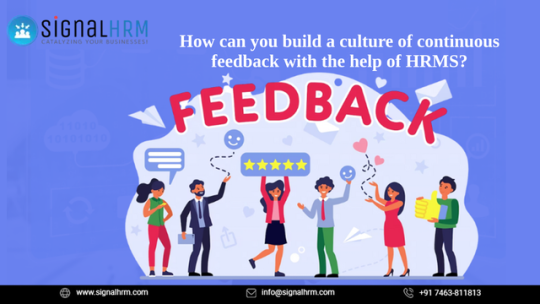
#hrms#digital marketing#signalhrm#hrms payroll software#hrms solutions#hrms systems#hrmscloudbased#productivityboost#hrms software#humanresources#biometricsattendance#decision making#attendance tracking#work culture#feedback
1 note
·
View note
Text
Understanding the Total Cost of Ownership (TCO) of HRMS Management Software
Human resource management software enhances the HR processes, thereby enhancing employee experience, and increasing overall efficiency. Since organizations are embracing HRMS, it is essential to know the total cost of ownership going further than the initial investment.
What is the Total Cost of Ownership (TCO)?
The total cost of ownership includes all the direct and indirect expenses related to obtaining, implementing, utilizing, and maintaining HRMS software throughout its lifecycle. It includes several other components apart from the upfront subscription and licensing charges.
Implementation Expenses: Includes costs related to data migration, training, deployment, and software customization.
Integration Expenses: Expenses related to integrating HRMS with existing systems such as time and attendance tracking, and payroll.
Operational Expenses: Costs related to technical support, software updates, user licenses, and maintenance.
Expansion and Scalability Expenses: Charges that incur when organizations need to scale the software as the business expands.
Security Expenses: Expenses related to reinforcing security such as compliance audits and data protection protocols.
Vendor Management: Expenses associated with vendor relationship management such as SLAs, contract negotiations, and vendor migration.
Factors that impact TCO Analysis
Deployment Mode: HRMS software has different deployment models such as cloud-based, on-premises, and hybrid with different resource requirements and costs.
Customization Needs: At times, businesses need to personalize the HRMS software according to their business processes, which affects the implementation expenses.
Adoption and Training: The users need to be trained to use the HRMS software optimally.
Software Updates: Regular HRMS updates, patches, and support services are necessary and add up to the continuous operational charges.
Conclusion: Organizations need to consider all the charges (direct and indirect) related to HRMS acquisition, implementation, and maintenance. This helps them to make informed decisions and optimize HRMS usage to derive the maximum value out of the investment.
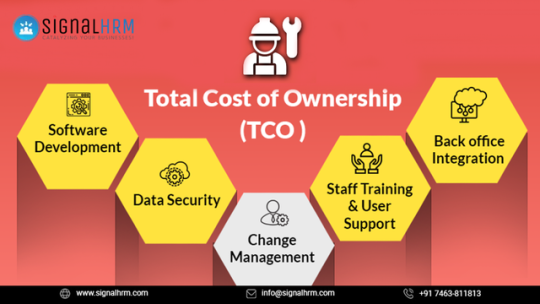
#hrms#digital marketing#signalhrm#hrms payroll software#hrms solutions#hrms systems#hrmscloudbased#productivityboost#hrms software#humanresources#biometricsattendance#decision making#attendance tracking#work culture#Total Cost of Ownership
0 notes
Text
How can HRMS Help Build a Responsible Work Culture?
Cultivating a responsible work culture is imperative for organizations to succeed in the competitive business world. HRMS management software plays an important role in defining and building a responsible workforce. The HRMS software takes care of everything – leaves, attendance, payments, expenses, grievances. Let’s find out how you can leverage the HRMS management software to hire and retain responsible employees.
Use Analytics: Analytics help to understand employee performance, engagement, and retention rates. By getting insights into the organizational processes, companies can find potential ways to improve policies and procedures. Also, they can automate mundane tasks, nurture a positive work culture, and enhance organizational efficiency.
Promote Communication and Collaboration: By enabling employees to express their ideas, and share their problems, organizations can facilitate transparent communication and collaboration within the team. Access to company policies, procedures, and expectations in terms of job responsibility improves accountability and motivates the employees to make decisions aligned with the organizational goals.
Recognition and Rewards: HRMS software facilitates the easy generation of employee reports based on their performance and goals completed. HR professionals can use send personalized emails and messages on their birthdays, anniversaries, and target-oriented achievements. Recognizing the efforts of employees encourages them to perform better.
Compliance and Ethics Monitoring: By centralizing data and automating compliance processes, HRMS software enables organizations to ensure compliance with legal and ethical standards. Features such as policy acknowledgments and audit trails enforce the necessity of ethical conduct.
Learning and Development Opportunities: HRMS contains learning and development resources that are easily accessible to employees enabling them to learn and progress. This ensures the employees are updated with the latest trends and know-how of the domain they work in.
If you are planning to foster a responsible work culture, SignalHRM is the best choice. Contact us to know more.

#hrms#digital marketing#signalhrm#hrms payroll software#hrms solutions#hrms systems#hrmscloudbased#productivityboost#hrms software#humanresources#biometricsattendance#decision making#attendance tracking#work culture
1 note
·
View note
Text
How to get the Maximum from HRMS Software?
HRMS software equips HR professionals to streamline human resources tasks and help them achieve maximum efficiency and productivity. Read this blog to discover the best ways that help you extract the most out of your HRMS management software.
Assess processes before implementing technology: Assess the existing processes of your organization to find out how you can use HRMS software to manage your processes effectively. For instance, you can check the HR content to find what changes need to be made.
Make regular improvements: Set up your organizational goals and objectives. Use the HRMS software to find out if the assigned projects or tasks have been completed by the respective teams within the specified deadlines. If there are any deviations, take remedial actions to attain positive outcomes.
Guide your employees to adopt HRMS: Train your employees to use the HRMS management software. Sometimes employees are reluctant to learn and implement change. Therefore, HR managers must set short-term goals to encourage their team to use the HRMS software efficiently.
Choose the right software: Make sure you carry out research and find out the available options. Compare their features and functions and the types of services they offer. For example, SignalHRM offers comprehensive solutions for leave management, attendance management, payroll, and recruitment.
Once you have selected an HRMS for your organization, HR professionals must do their best to use the HRMS to execute HR processes. For example, the recruitment modules help them to post jobs, attract candidates, and screen and interview them. Post-interview, the employers can onboard the employees easily. The attendance management module makes it easy to record attendance accurately and facilitate payrolls accordingly in compliance with the tax rules.
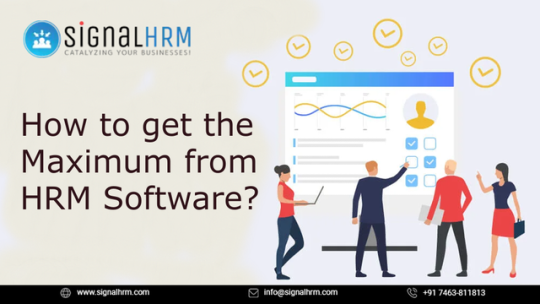
#hrms#digital marketing#signalhrm#hrms payroll software#hrms solutions#hrms systems#hrmscloudbased#productivityboost#hrms software#humanresources#biometricsattendance#decision making#attendance tracking
1 note
·
View note
Text
What are the Benefits of Attendance Management Systems?
Manual attendance tracking consumes time and effort along with compromising accuracy. The attendance management systems make tracking much simpler and more accurate. In this blog, we’ll discuss the benefits of attendance management systems.
Payroll: The payroll procedures vary based on the employee type, for example, contractor or full-time employee. For contractors, managing time and attendance is easy as the remuneration is project-based. However, for salaried employees, different parameters such as (sick leaves or casual leaves) need to be tracked.
Time-Off Requests: Taking breaks from work is essential for employees to prevent burnout and have some time way with family and friends. To fulfill these goals, it is important to understand when the employees want to take time off. HRs can implement a robust reliable system to manage leave requests, allowing employees to specify their preferred days off.
Better Work Experience: Maintaining positive relationships with the employees is essential for the organization’s growth. Tracking leaves with HRMS with a robust attendance management module gives insights into the well-being of the workforce.
Enhances Accuracy of Records: Accuracy of the records of the attendance management system is very important. A leave management system documents and tracks employee leaves and attendance. These records are beneficial in times when there are legal conflicts and evidence is needed. The records from the attendance management system help to resolve issues promptly.
Encourage Regular Attendance: Monitoring employee attendance and rewarding high-attendance employees urges their fellow employees to maintain good attendance records. You can offer them gifts, bonuses, or extra incentives to motivate them, along with improved productivity and profitability of the organization.
SignalHRM is a top-notch HRMS management software, that allows you to streamline HR processes such as employee leave and attendance management. Contact us to know more.
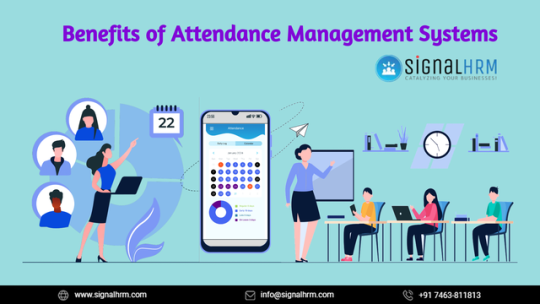
#hrms#digital marketing#signalhrm#hrms payroll software#hrms solutions#hrms systems#hrmscloudbased#productivityboost#hrms software#humanresources#biometricsattendance#decision making#attendance tracking
1 note
·
View note
Text
How can Data Analytics Facilitate Better Decision-Making?
The HR departments can leverage data analytics to make decisions that contribute to the growth of their organization along with employee well-being. These data analytics give a comprehensive understanding of areas that need improvement, workforce engagement, and strategies that will help to promote the well-being of the organization. Key metrics such as absence records, employee engagement levels, turnover rates, training, and effectiveness scores give an all-inclusive view of the workforce and find ways to address potential loopholes.
Acquiring and retaining talent: The HR professionals can evaluate the data from recruitment processes and classify sourcing platforms, improve applicant screening approaches, and create targeted recruitment strategies to attract and retain talented candidates. Also, data analytics gives details about the demographics of the applicants, the time needed to fill positions, and the success rate of hiring processes.
Engaging employees: The HR teams get valuable insights from data analytics (such as surveys, performance reviews, and feedback) to understand the engagement levels of employees, find out the elements that impact their satisfaction, and frame approaches to ensure productivity and well-being.
Managing performance: By comprehending data analytics, the HR teams can assess employee performance, find skill gaps, and create remedial actions to encourage growth and development. Also, they can recognize top performers, track their contributions, and offer targeted support to boost overall productivity.
Planning and managing workforce: Data analytics helps HR professionals create talent management strategies to train existing staff, hone their skill set, and create promotion plans for great employees to promote them to senior leadership roles.
Do you have a tool that offers accurate data analytics? SignalHRM is a reliable HRMS software that offers comprehensive insights about HR metrics and empowers the HR department to make well-informed decisions.

#hrms#digital marketing#signalhrm#hrms payroll software#hrms solutions#hrms systems#hrmscloudbased#productivityboost#hrms software#humanresources#biometricsattendance#decision making
1 note
·
View note
Text
The Role of Chatbots in HRMS
Chatbots allow HR departments to automate different HR processes such as onboarding, recruiting, and training. Also, they contribute to ensuring clear communication and coordination within the team. This blog focuses on how chatbots can help to manage HR operations more effectively. Let’s dive in.
Recruitment: A chatbot makes the recruitment process easy by filtering resumes, arranging interviews, and keeping a progress track of different stages of recruitment. AI-powered HR chatbots extract relevant information about the employees, eliminating the need to sort resumes manually.
Onboarding: Chatbots help the HR department to organize onboarding for new employees. Once the employees log in, the chatbots direct him/her to all data sources to facilitate a digital induction. Also, it reduces the complexities of physical onboarding, saving time.
Improve employee communication: Inconsistent communication in the organization leads to potential bottlenecks. Chatbots ensure clear communication within the organization, enhancing the employee experience.
Address employee queries: Organizations can upload the FAQs in the AI-powered chatbots. This saves the HR’s time by answering the repetitive questions asked by the candidates through natural language processing and machine learning.
Improving productivity: Intelligent chatbots help to enhance the productivity in an organization. Since they depend on unbiased data, they help to track goals effectively and consider them during performance. Therefore, chatbots ensure accurate information in terms of data collection and analytics.
Quick referral processes: The chatbots send notifications to the employees about the open positions and ask them to refer the right candidates. Tracking and managing referrals become easy, sending updates to employees about the outcome and ensuring transparency to motivate employees to participate in referral programs.
The role of HR chatbots is becoming significant in the HRMS management processes. As organizations face the complexities of modern workplaces, using HR chatbots will help them stay competitive and address employee needs.

#hrms#digital marketing#signalhrm#hrms payroll software#hrms solutions#hrms systems#hrmscloudbased#productivityboost#hrms software#chatbot#humanresources
1 note
·
View note
Text
Tips to Develop a Data-driven HR Strategy
Every HR team must map and follow a clear strategy to derive meaningful insights and decisions from data. This article covers all the important tips that will help HR departments create a data strategy that works well to bridge the gap between data management and HR practices.
Set your business goal: List the goals or challenges that you want to work for. Further, identify the actions that you need to complete them.
Start with a hypothesis: It is always better to start with a straightforward hypothesis. Make sure you add a human touch to the people analytics, without delving into numbers at an early stage (as they may result in wrong conclusions). The hypothesis must be easy to test through surveys and forms.
Assess your existing data: Begin by assessing the current data resources. Take into account feedback data or insights from exit interviews. If there are gaps in the feedback opportunities, implement them to get insights in the future. Use historical data such as employee engagement, turnover rates, and compensation history to make informed strategic decisions.
Storytelling: The HR department must use the craft of storytelling to create engaging data visualizations and presentations. Use pictures, charts, and videos to explain the statistical data to your audience. This helps to communicate the business questions and provide data-driven answers to the senior leaders.
Create a strategic plan: Plan how you will implement your strategic insights. Ensure all the stakeholders participate actively during the plan creation. This validates their commitment to understanding how data-driven decisions contribute to the growth of the organization. Include the implementation steps, financial plan, schedule, and monitoring metrics in the plan.
Use data-driven HRMS software: Reliable HRMS tools such as SignalHRM helps HR managers to gather, analyze, and interpret data by ensuring data privacy.
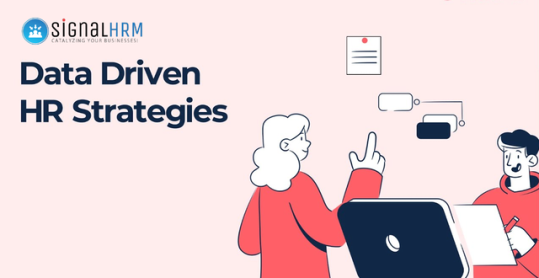
#digital marketing#hrms payroll software#hrms software#hrms systems#productivityboost#hrmscloudbased#signalhrm#hrms#hrms solutions#datadriven#hr strategy
1 note
·
View note
Text
Agile Approach: HR Decision-Making in a Rapidly Changing World
The Agile HR approach uses Agile principles and techniques to empower HR managers to fulfill the dynamic needs of their organizations in the ever-evolving business environment. It enables the HR team to optimize the existing resources and create their own HR strategies to meet the challenges and adapt to the changes quickly.
Ways to Make HR Decision-Making More Agile
Follow iterative methodology to assess HR practices: Evaluate the existing HR processes to find areas of improvement, followed by setting a timeline to accomplish the objectives. Further, create a plan of action to initiate. Make sure all the important metrics are tracked timely. If there are any deviations, look for alternatives or find better ways to ensure the changes are working.
Incorporate Agile performance management: The Agile performance management features make it easy to track performance and improve results. For example, goal setting helps organizations create attainable goals and allow employees to work collectively to accomplish them. Measuring employee performance against the goals enables organizations to recognize and reward the ones who played a critical role in achieving those goals.
Continuous feedback: Gathering feedback gives a comprehensive understanding of performance and satisfaction. Ensure the feedback is timely, constructive, and actionable to identify the areas that need improvement.
Adopt Scrum: Organizations can implement Scrum to divide tasks into small, time-restricted sprints. It helps the team to evaluate the progress and make required changes while focusing on continuous improvement and collaboration.
Engage employees regularly: Create strategies to encourage employees to work together to increase productivity, and provide feedback to ensure a better working environment. You can use engagement to resolve any conflicts between the employees and leaders, thereby improving the experience of everyone working together.
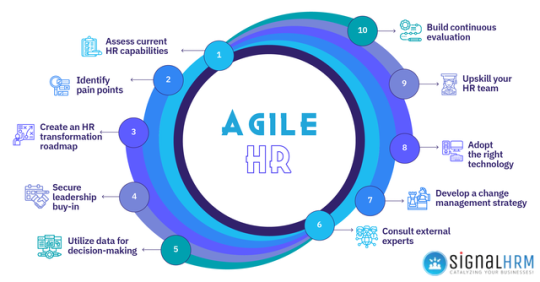
#hrms#digital marketing#signalhrm#hrms payroll software#hrms solutions#hrms systems#hrmscloudbased#productivityboost#hrms software#agilehr
1 note
·
View note
Text
On-premise vs. Cloud-based HRMS: Which is better?
When choosing an HRMS management software, a crucial decision to make is whether to opt for an on-premise HRMS or a cloud-based HRMS. Owing to the dynamic nature of HR operations, a cloud-based solution is highly recommended. Read this article to learn how cloud-based HRMS software adapts and aligns with modern work trends.
Easy installation and maintenance: Since the cloud-based HRMS is hosted over the Internet, the service provider takes care of the installation along with support and customer care. The on-premise software needs a physical installation at the preferred location.
Personalization: The HR department can customize the features depending on what is needed to manage the workforce. This ensures easy adaptation to the changes in HR operations. While in an on-premise HRMS, most of the customization is handled by the IT department.
Economical: In the cloud-based HRMS, the organizations pay according to the usage. It reduces the costs of upgrades, licenses, and other hidden costs as compared to the on-premises software model, where you have to pay for installation, server, software license, and upgrades.
Improved security: A cloud-based HRMS complies with industry standards and regulations. Your data is secure and is backed up periodically to ensure business continuity in times of crisis.
Easy accessibility: Organizations can access a cloud-based HRMS ubiquitously through devices such as laptops or mobile phones. The on-premise HRMS needs the physical presence of employees.
Seamless integration: You can enable third-party integrations with cloud-based HRMS during any stage at minimal cost. However, adding third-party integrations to on-premise HRMS takes significant effort, time, and investment.
Conclusion: SignalHRM is a cloud-based HRMS with a distinct advantage over other on-premise HRMS. It offers scalability and flexibility that aligns seamlessly with the changing work setups, providing an upper edge in HR management.
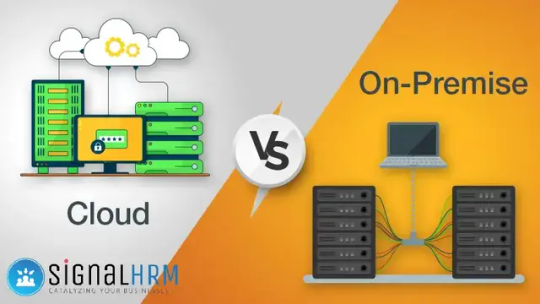
#hrmscloudbased#hrms systems#productivityboost#digital marketing#hrms software#hrms payroll software#signalhrm
2 notes
·
View notes